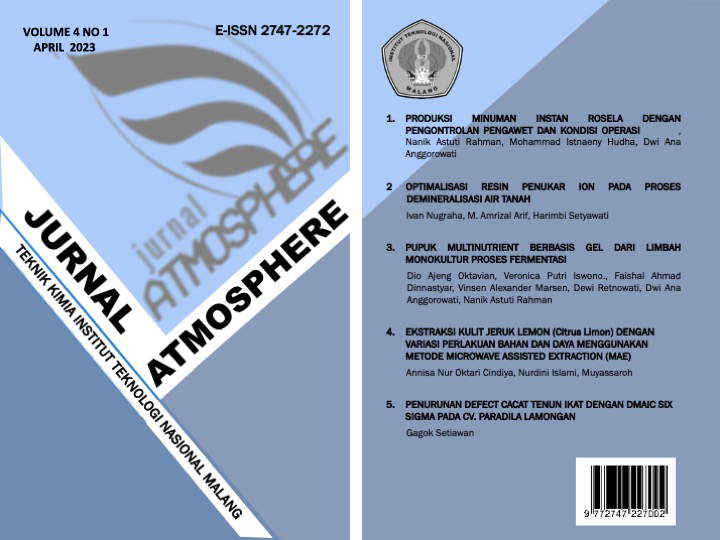QUALITY OF BIOBRIQUETS MADE FROM BAMBOO STEMS AND CABBAGE WASTE
Abstract
Fossil energy reserves in the world are decreasing every year, while the need for energy continues to increase as the population and industrial sector increase. Thus renewal must be carried out as a breakthrough in anticipation of producing alternative energy to replace fossil fuels. Biobriquettes can be used as an alternative fuel which is expected to be able to overcome the (fossil) energy crisis, because it comes from cheap materials and uses simple technology. Bamboo can be used as a raw material for making biobriquettes because it contains high levels of cellulose and lignin, namely 42.4 – 53.6% cellulose and 19.8 – 26.6% lignin. On the other hand, there is a lot of vegetable waste which is an environmental problem, one of which is cabbage. This study aims to determine the best quality of biobriquettes in terms of the effect of compressive strength and variations in the composition of bamboo and cabbage. The method used in the manufacture of biobriquettes is carbonization. The variables used were the composition of bamboo: cabbage with a ratio of 40:60, 50:50, 60:40, 70:30, and 80:20, and the compressive strength variables were 50 bar, 70 bar and 100 bar. From the results of this study, it was found that the best mixing ratio of biobriquettes produced the highest calorific value in a mixture of 80% Bamboo: 20% Cabbage with a compressive strength of 100 bar, with a calorific value of 7116.35 cal/g, a moisture content of 0,3205%, an ash content 3.061%, volatille matter 0.268%, burning rate 0.0644 g/min, carbon content 96.3505%


